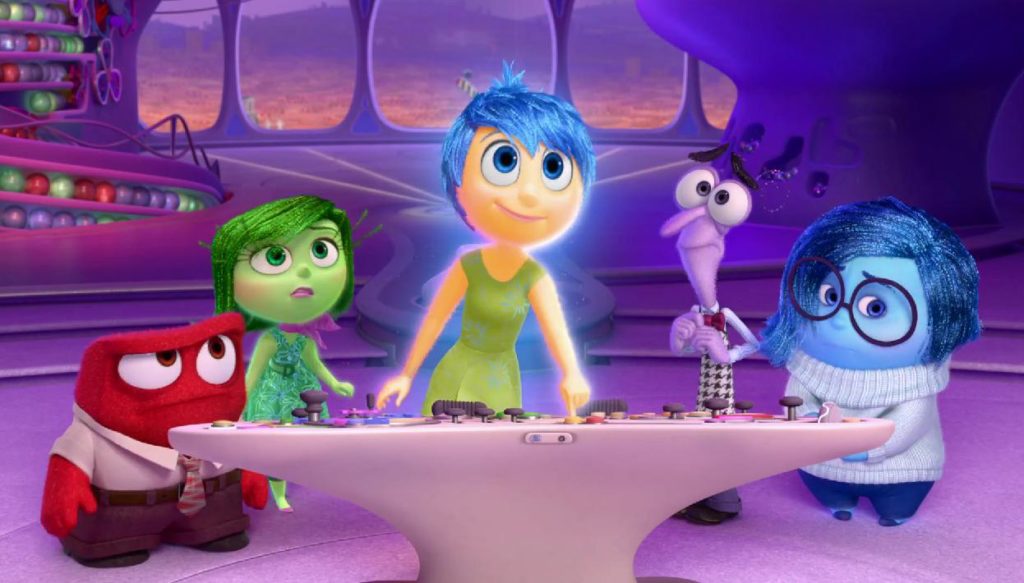This week I watched the Pixar movie ‘Inside Out” The story is:
“Like all of us, Riley is guided by her emotions – Joy, Fear, Anger, Disgust and Sadness. The emotions live in Headquarters, the control center inside Riley’s mind, where they help advise her through everyday life. As Riley and her emotions struggle to adjust to a new life in San Francisco, turmoil ensues in Headquarters. ” Source: Inside Out (2015) – IMDb
I really enjoyed the movie, and liked the moral of the story that sadness and other ‘negative’ emotions are a valuable part of us, just as much as being optimistic. Fear was presented as a mixed bag of keeping us safe and making us paranoid, while Anger was pretty much painted as the bad guy. Emotions are complex and this movie was based on research and very talented storytellers! I am quite a connoisseur of Pixar and kids movies over the last decade, and was delighted to see such a deep theme being passed on to a generation of little minds. (Avengers handling of Singularity blew me away too!)
The movie was a much easier way to explore concepts of psychology than the academic papers I have been reading on theories of emotions, like PENS, Big 5, McLellands, SDT and the PSI theory of emotions. As an educator and drama Teacher intrigued by play and games, the PSI-theory has been my preferred model to better understand what is going on in my students’ minds and their motivation. I will be writing about this a lot on my blog as it is the underlying principle of my teaching approach. The PSI Theory:
…Assumes a universal motivational system that consists of four basic motivations, namely securing one’s existence (“basic needs” like hunger, thirst, warmth, etc.), sexuality (with all related facets), affiliation (the need for “affiliative signals” that come from being acknowledged in a group, from successfully securing one’s group membership and social status, and from action that is in accordance with one’s worldview), and the need for control. This latter motive is a bipolar one which comprises both the need for security (being able to predict and control important aspects of the future) and the need for excitement, novelty and new challenges (which, in turn, increases one’s competencies and therefore security.
Armed with insight into types of motivations at different phases, I create Learning Journeys and User Profiles. Learning activities are planned for each need and phase based on changing motivations. I have been delighted with the results and am now documenting what I have done for other Learner Experience Designers to remix and share.
